Dedicate a little time each month to these 5 SEO actions, and get back to what you enjoy most.
This post contains affiliate links and is part one of a two-part article. Ironic that discussing bare minimum SEO will take two whole posts, but if we’re gonna be cheeky and shave a few edges of those SEO responsibility corners, then let’s at least do it right. Enjoy!
The big question
“Barb, what’s the minimum I need to do to keep my SEO plan in good health?”
When a budget-strapped client asked me this I really admired their honesty and enthusiasm. They were facing difficult market spend decisions, but understood the importance of keeping up with SEO.
Stopping completely would mean losing the impact of the work that had been done to date.
So what should they do instead?
Keeping up with your SEO is hard
For many small business owners we don’t have time for SEO or the ongoing budget to fund professional support. We’re busy juggling the thousand other balls that keep the money rolling in and our clients happy. SEO becomes a low priority. It’s confusing, time-consuming, and often overwhelming.
If you’re nodding along you’ll be pleased to hear that you can take a bare minimum approach to SEO and still do OK.
Note, the bare minimum shouldn’t be viewed as a long-term fix. It’s less about increasing your SEO efforts and more about maintaining the SEO plan you’ve already got in place.
Here are five bare minimum SEO techniques that will take less time than your coffee to percolate. (Well, almost.)
1. Keep an eye on your site health
The landscape on which SEO is built is always changing. This is part of the reason search engine optimization is tricky. Your website isn’t static and neither is Google.
As you add more pages, products or content you need to manage your metadata and optimize correctly.
As algorithms change, your site pages could be impacted.
Now you may think checking your site health is yet another time-consuming task. But here’s some good news: there are tools that monitor your site health and send their findings to you automatically.
Here are three of my favorite Google site health tools.
SEMrush
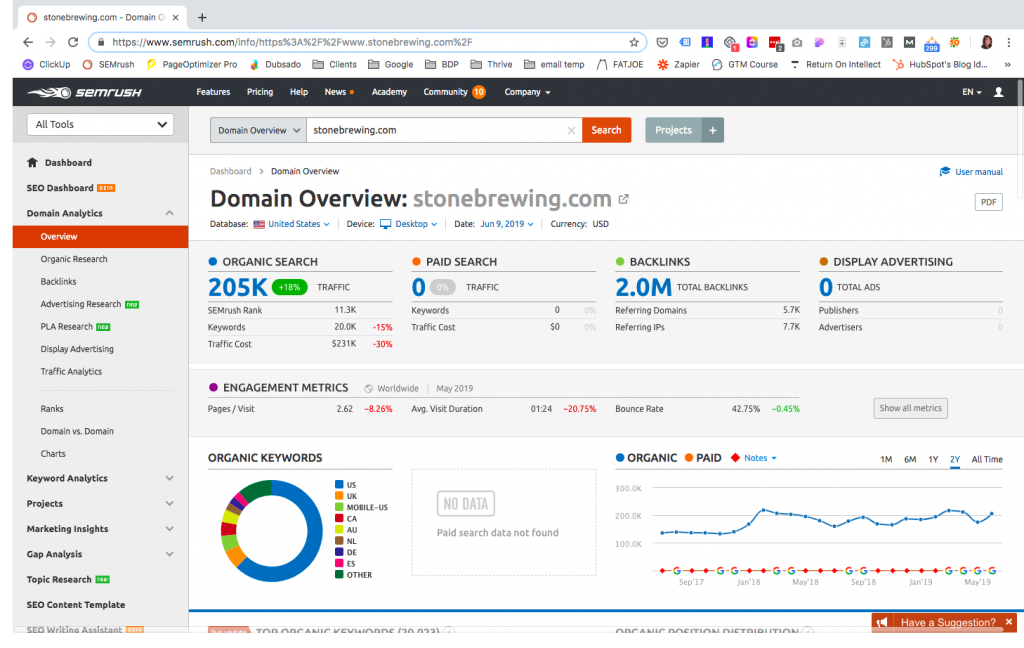
My tool of choice (because it’s my favorite) is SEMrush. One of the best features is that the findings in the report are delivered in priority order. This saves you time because it spells out what you should tackle first.

Image source SEMrush
The free version will crawl up to a 100 pages of your site each month. If you’ve got a bigger site or need to run a health check more than once a month, you can snap up a paid plan for $99.99 per month.
AHrefs
Like SEMrush, AHrefs reports also prioritizes issues. The main difference — and why you might prefer to use them — is their detailed backlink analysis ( the report shows a higher number of indexed backlinks) and link outreach tool. If improving the backlink part of your SEO plan is a priority then this is a great tool for you.
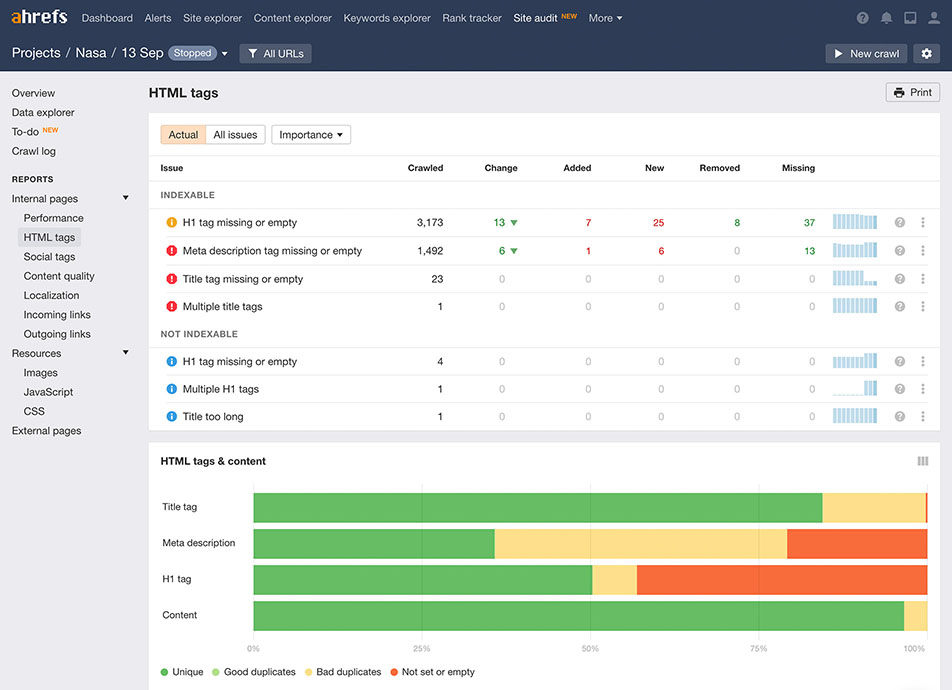
Image source Ahrefs
Simply set up a schedule for the report. You can set it to do daily, weekly or monthly crawls. Once the pages have been scanned visual indicators highlight what’s important and less important.When you’re short on time this sliding scale makes it easier to determine what needs addressing now and what can be shelved.
AHrefs offers a 7 day trial for $7 days. Paid plans start at $99 per month.
WooRank – great for keeping it simple
A fun name for a wonderfully minimalist tool. Like the others, WooRank reports on issues in order of importance and gives you key details about your SEO, usability, mobile first and backlinks. But the amount of detail you get in a WooRank report is only a fraction of what SEMrush or AHrefs tells you.
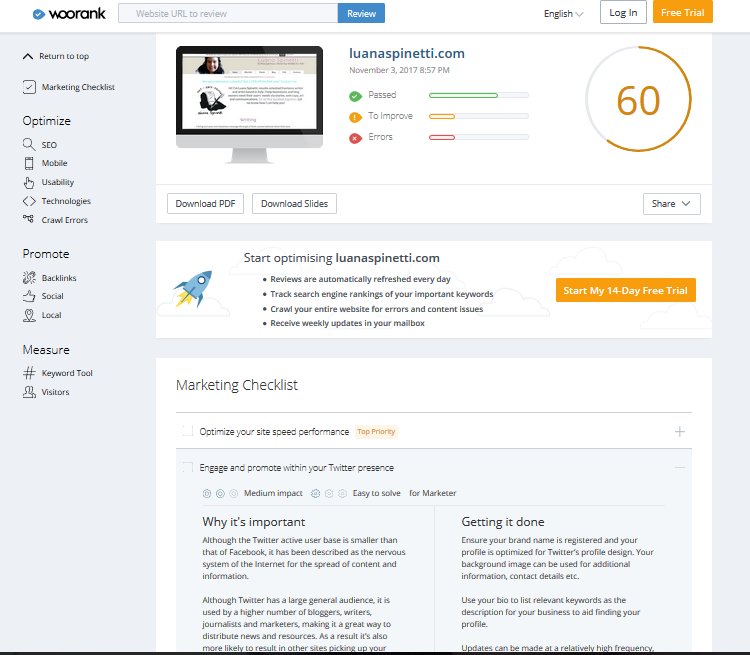
Image source CoSpot Content Marketer Blog
If budget is influencing your reason for needing bare minimum SEO techniques then get yourself over to WooRank. They offer a 14 day free trial and paid plans start from as little as $59.99 per month.
2. Monitor keyword visibility
Keyword visibility is a measurement based on the percentage of time your website is visible in organic search results.
Example: if your website has 100% search engine visibility, it means you have every single search engine result for that search term. Along with all the clicks.
Sounds ideal. But just like me being able to run and talk at the same time, that ideal will never happen.
Most tracking tools rank based on the first 100 search results.
Check how your keywords are showing up by typing them into tools such as SEMrush, Ahrefs, and Moz. They’ll deliver a report on how certain keywords are ranking and if they are still in favor with your audience.
3. Set up Goals in Analytics
Linking your site to Google Analytics is important. But once it’s linked you need to set goals. This shows whether the traffic you’re getting is converting, because what use is a lot of traffic if you’re not getting the desired business outcome?
To give you an example, let’s say your goal is getting more leads. You’ll measure this by how many people fill out your contact form.
[thrive_text_block color=”light” headline=”Here’s how you set up the goal in analytics.”]
• Go to ‘Admin’
• Select ‘Goals’
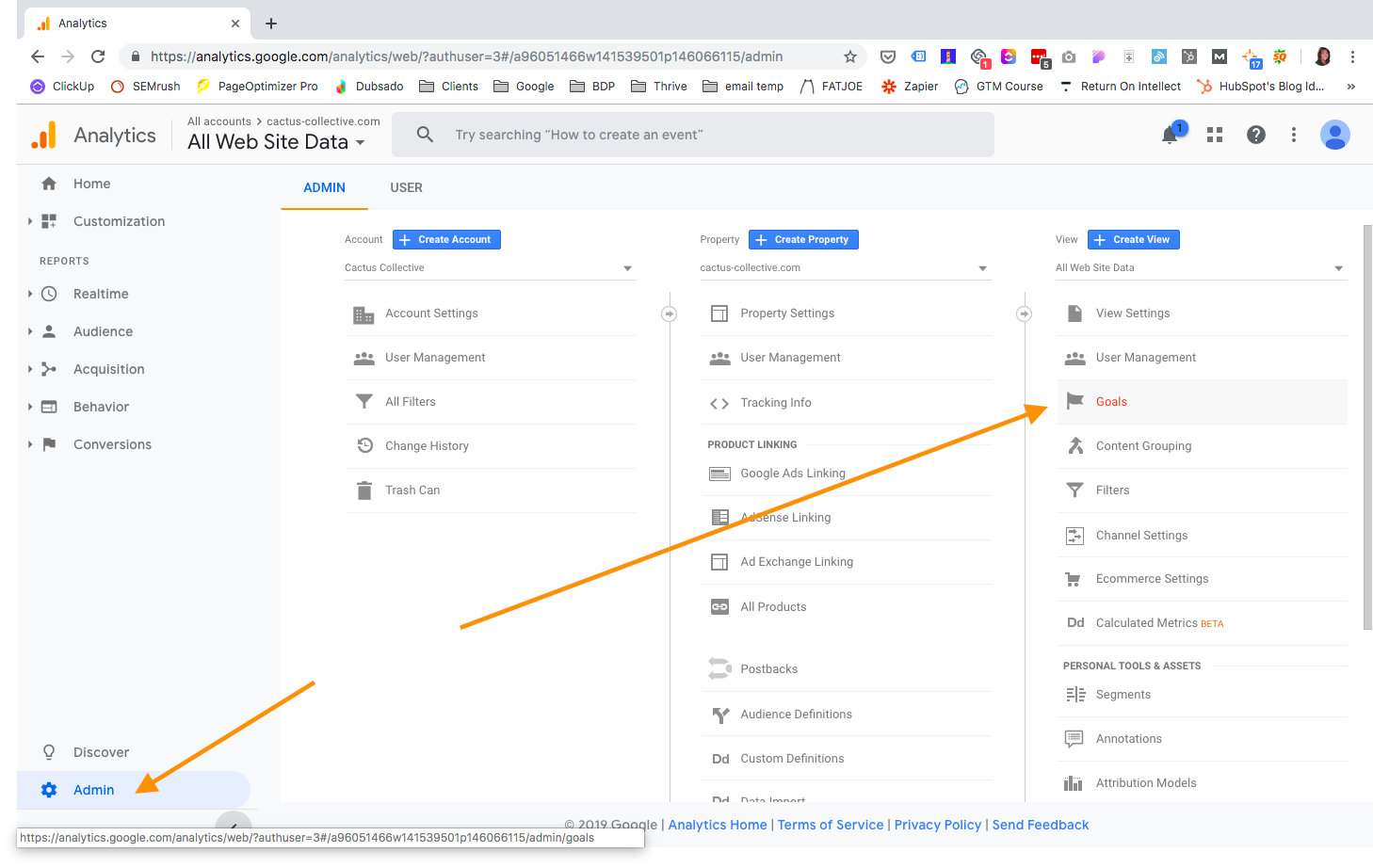
• Choose ‘New Goal’
• Give that goal a name. If you’ve got leads coming in from multiple places, put the place in the goal name. For example, ‘Main Contact Form’ or ‘PPC Landing Page’.
• Don’t worry about ‘Goal Slot ID’. This can be left as default.
• Set the type to ‘destination’
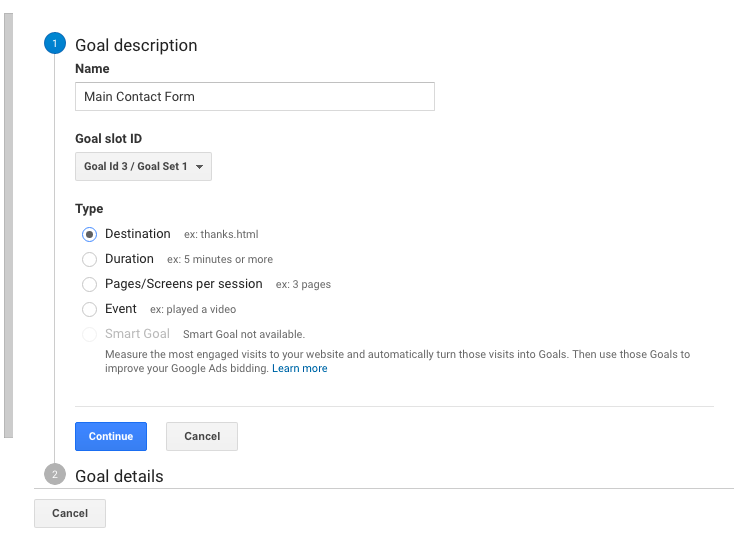
• Click ‘Continue’.
• Set the destination to the thank you page of your contact form.
If you set it to your contact form page, it’s registering a goal only when people have visited the contact page.
We want to register after they have clicked submit and they have reached the thank you page.
• Click ‘Save’.
[/thrive_text_block]
One of my favorite reports is the channels report. It’s a great way to see what traffic sources are generating the most leads.
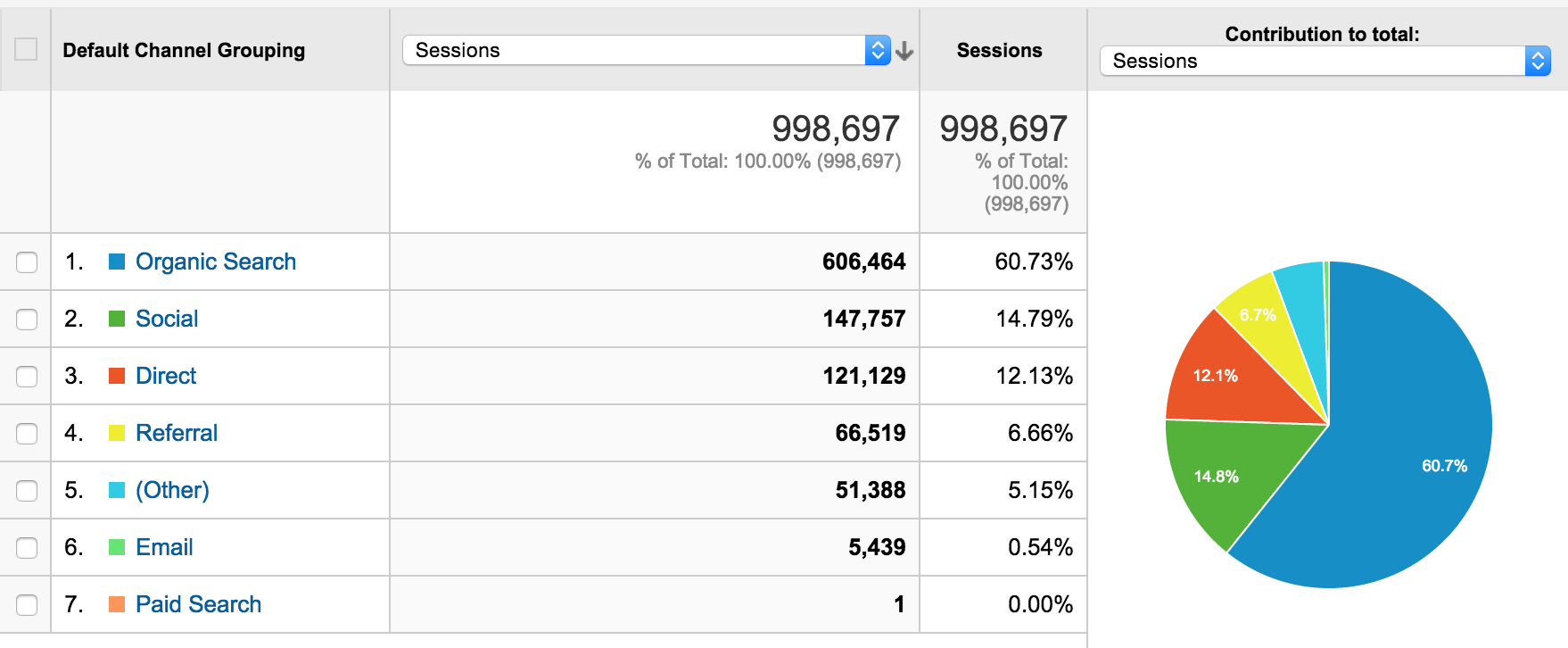
Image source Buffer
4. Monitor Google Search Console
If your SEO plan is established then you should be familiar with Google Search Console. For bare minimum SEO you should continue using Google Search Console. In particular, check your index status and watch for any page errors.
Index status tells you if Google is seeing your website.
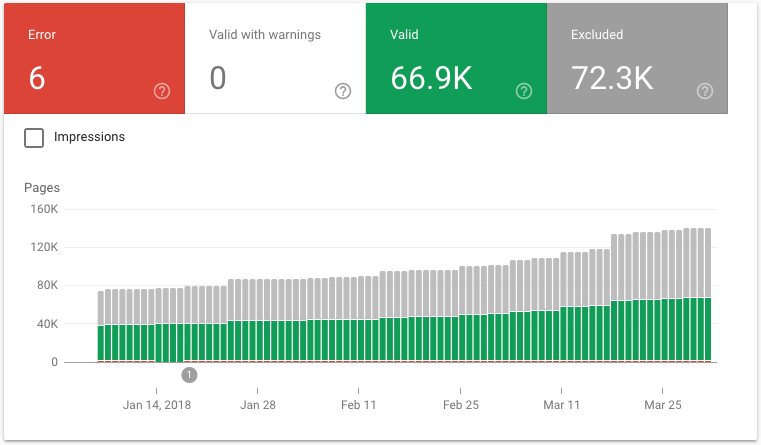
Image source Search Engine Roundtable
For example, one of my clients uses Thrive Leads, a list building plugin. To help, Thrive Leads lets you create pop-up windows with sign up forms.
I didn’t want these pop-up windows to appear in search results by themselves with no context. So I programmed the box to tell Google to not index it. But the WordPress SEO plugin being used, Yoast SEO, by default, indexes those windows.
I didn’t know that until I saw in Google Search Console there was an indexing error.
Google was being told to index these windows (by Yoast) even though on the individual window I set it to not index. As a result, the pop-up windows were having a negative effect on the site’s SEO.
When I saw the error, I went in and adjusted the settings in Yoast.
Problem solved!
5. Publish content every month
Creating new content attracts more people to your site. I’d go as far as saying content marketing strategy is the backbone to SEO success.
For most small businesses, creating content means publishing blog articles. Writing and posting a blog doesn’t require buying any extra equipment, they can be as long or as short as you need them to be, it’s a great way to get fresh content on your site (which keeps Google happy), and you can repurpose the content across your social media and email campaigns.
Aim to post a new article at least once a month. One of my favorite photographers, Eugene Tan, posts beach life related photos every day to his website, Aquabumps.
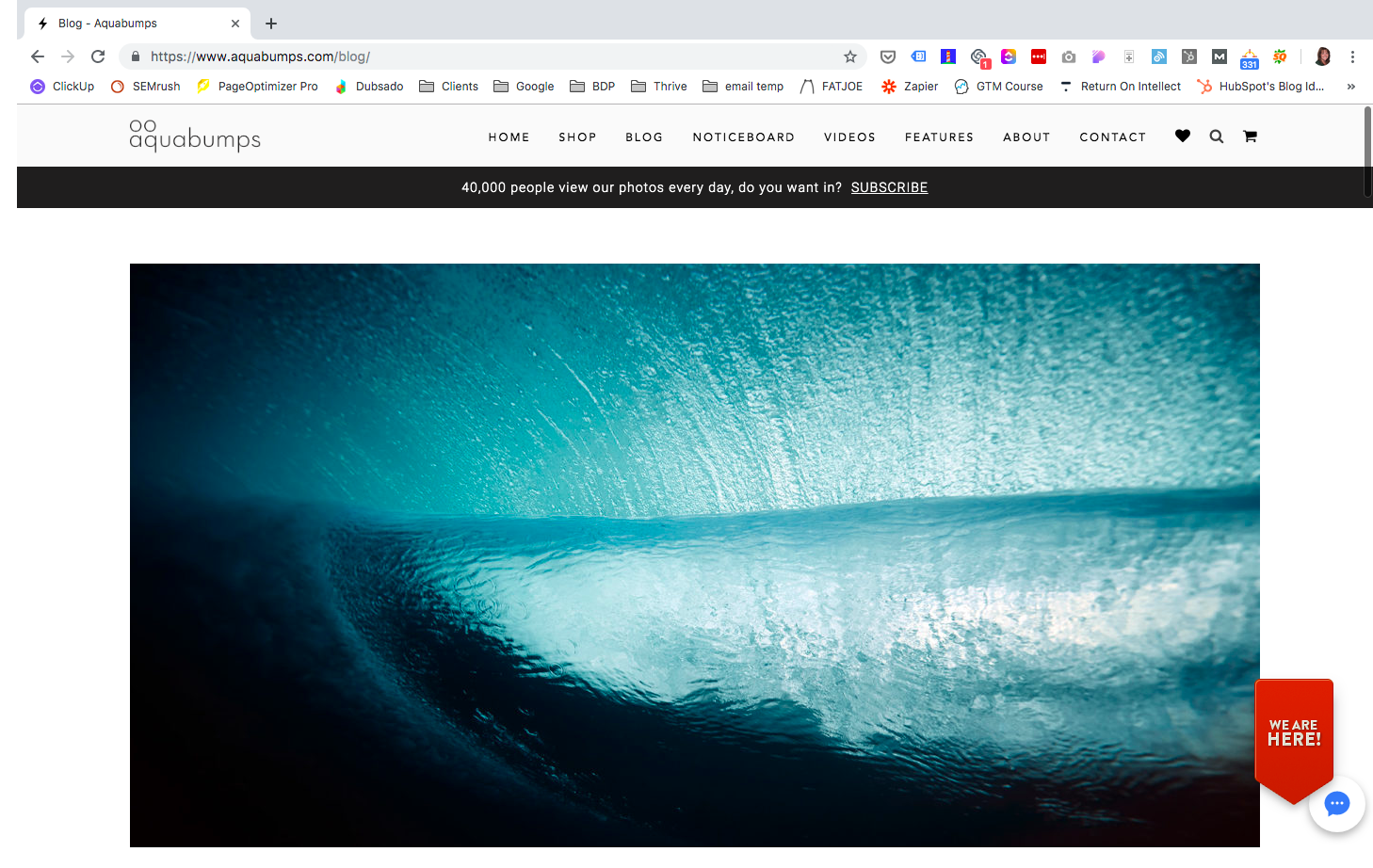
And his posts are relatively short most days.
And there’s Mark Manson. He posts life advice subjects once or twice a month, longer form posts. His latest post was almost 1,400 words.
The point is, publish something.
If you’re not a huge fan of writing, work with a professional copywriter to help. Fancy giving blogging a go? Then the number one piece of advice: get clear on your topic before putting fingers to keyboard. This will help you keep your points focused and avoid rambling.
When I work with clients I provide a content template. It provides a word count guideline based on what’s working for high ranking competitors. Hitting these word counts can help when relying on bare minimum SEO, but you should always opt for quality over quantity.
Not sure how to start a blog? Check out the ProBlogger website (it’s one of my favorite blogging resources). Or learn where to find blog inspiration by content marketer and copywriter, Rose Crompton.
Bare minimum SEO still needs your time
Even doing the absolute minimum amount to keep your SEO ticking over requires time. I suggest setting aside around two-hours a month to tackle these five bare minimum SEO techniques.
Schedule those hours in your work diary. That way it becomes a commitment.
If you’re completely time poor and can’t even put an hour or two aside, then you’re in a bit of a pickle.
Going it alone?
If you know for sure you’re handling your company’s SEO by yourself but you’re still feeling a little lost, then no worries.
Book your free consultation with me and we’ll work out where you should start.

